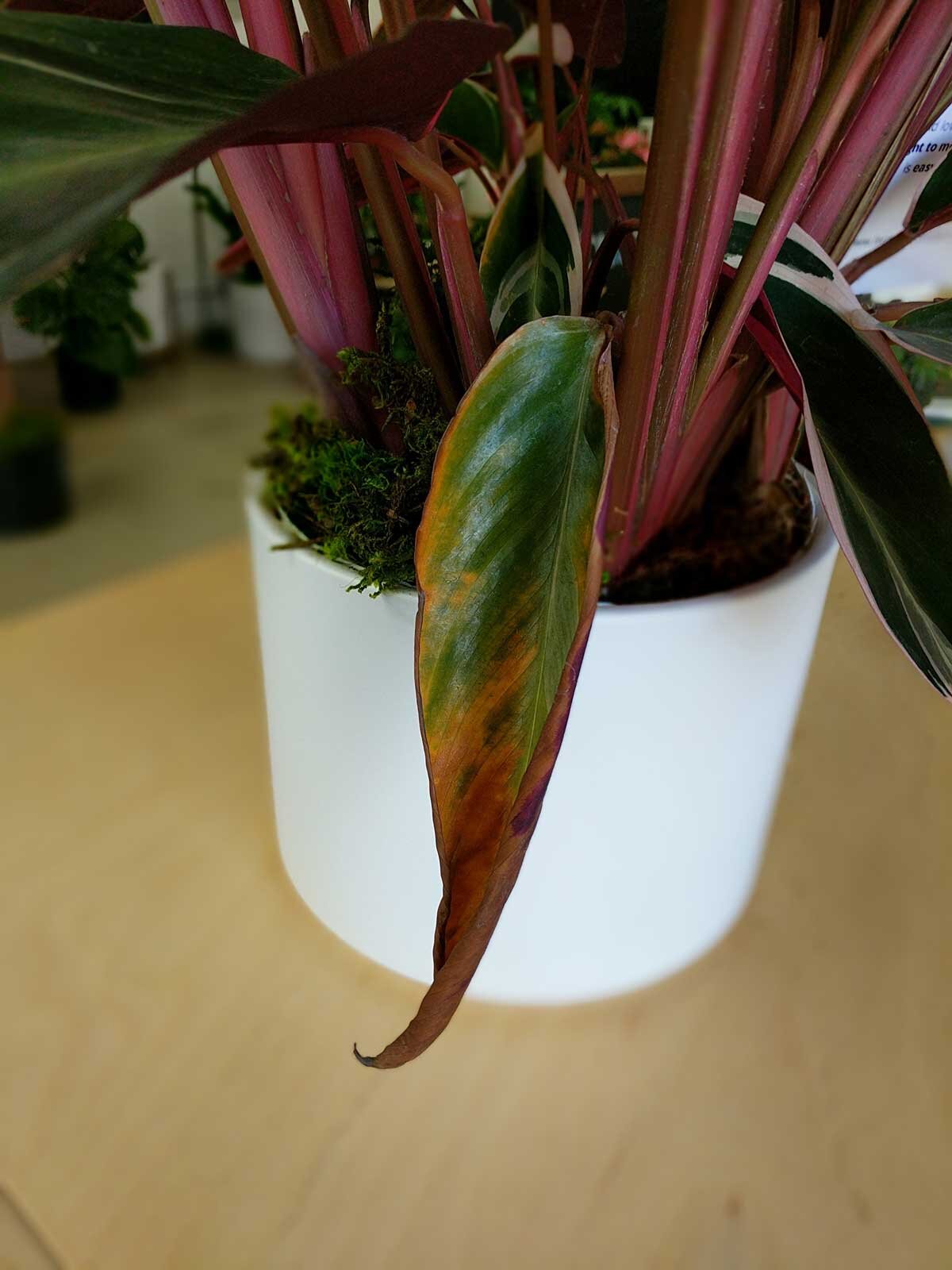With graceful, wand-like stems and waxy, emerald green leaves, the Zanzibar Gem is a true stunner and popular indoor plant for homes and offices alike. Given its ability to withstand long periods of drought or neglect, the ZZ gem has even earned itself the nickname of “the eternity plant”. Learn the basics of Zanzibar Gem plant care including light requirements, watering frequency, and how to troubleshoot common problems you may encounter along the way.
What type of light do Zanzibar Gems need?
The Zanzibar Gem prefers bright or medium indirect light, though they can adjust to low light as well, and even survive with just fluorescent overhead lights.
How to water your Zanzibar Gem
The Zanzibar Gem stores water in its bulbous roots, stems, and leaves, which means it does not need frequent watering. Water thoroughly about once every week or two or when the top two inches of soil is dry. Err on the side of under watering, and note that your watering schedule may be less frequent during winter months.
Are Zanzibar Gems fast grower?
In ideal conditions, the Zanzibar Gem can grow up to 10” per year, eventually reaching nearly five feet in height. In low light conditions, this plant will grow more slowly. Fertilize your Zanzibar Gem 1-2 times per month in the spring and summer with indoor plant food, or foliar feed year round.
Common problems with Zanzibar Gems
How to maintain a beautiful and healthy Zanzibar Gem
Take care of your Zanzibar Gem and it will take care of you! Below are simple tips to continue caring for your Zanzibar Gem over time.
Pruning
Zanzibar Gems practically shape themselves, so you won’t need to prune this plant often. Remove dry or dead leaves all year round but save any major pruning for the spring and summer months. Unlike other common houseplants, pruning a Zanzibar Gem does not promote new growth, so only remove unwanted stalks that are unattractive or have been damaged. When pruning your ZZ, use sharp, clean shears and cut at the base of the stalk.
Cleaning Your Zanzibar Gem
Though tedious, keeping your Zanzibar Gem dust-free will help the plant soak in more light. Clean the leaves regularly with a damp cloth, and incorporate misting into your routine to decrease dust build-up.
Repotting ZZ Gems
Indoor plants grow much slower than they would in the wild. Depending on the size of your plant and the density of the roots, this is nice to do every two to three years to provide fresh nutrients and encourage new growth.
When to repot - Zanzibar Gems have such strong roots that they will literally break their nursery pots when its time to repot! That said, they prefer to have their roots tightly compacted, so don’t feel rushed to repot if it looks or feels crowded. Usually Zanzibar Gems can be repotted every two years or so.
Pot sizing - if you want your plant to grow taller, find a nursery pot that’s 2” in diameter larger than the current pot. If you want your plant to stay the same height, you can reuse the same pot and simply change the soil.
Get your hands dirty - spread out newspaper on the floor, remove the plant from the pot and shake off as much of the old soil as possible so that you have clean roots. Place the plant in the center of the pot, add new soil and pat down very firmly. Water the soil thoroughly and place the plant in an area with bright indirect light. Your plant will take two to four weeks to settle from the shock and adjust to its new home.
How to propagate a Zanzibar Gem
Propagating the Zanzibar Gem is simple and there are a few different ways to do it. Thanks to the rhizome root system, Zanzibar Gems can simply be divided into new plants. However, you can also propagate with cuttings for a less messy process. Follow these instructions to propagate your Zanzibar Gem:
Select a few stems to propagate - Using sharp, clean scissors or shears, cut a stalk from the base of its growth. It’s best to choose shorter stalks— they will grow roots faster.
Let the cuttings dry out - Let the stalks dry and callous, and wait a few hours before moving on to the next step.
Place in water - Find a clear glass and place the cutting in it with water. You may also choose to first dip the cutting in rooting hormone, as this will increase the chances and speed of the cutting forming its own roots.
Place in a bright area and wait! - Avoid direct sun, and be patient! New roots may take a few weeks to begin forming.
Transfer to soil - After the roots are at least two inches long, transfer to indoor potting soil. A small pot is best — no larger than 6” in diameter. As this plant prefers to have its roots tightly compacted, it’s best to plant a few different cuttings and their roots in a pot together.
Keep hydrated - During the first few weeks, or until your plant feels firmly rooted in its soil, regularly water and drain your plant. The soil should be just barely moist to the touch at all times.
Illustrations by our talented plant stylist, Kailie Barnes.
ZANZIBAR GEM
Highly adaptable and thrives in a wide range of conditions, great for many home and office environments.












